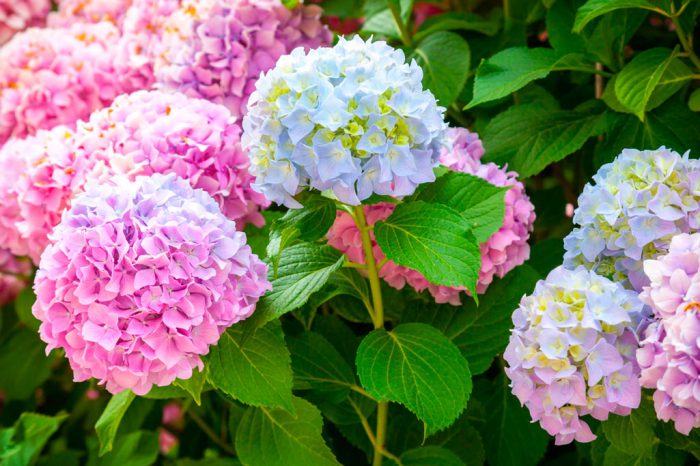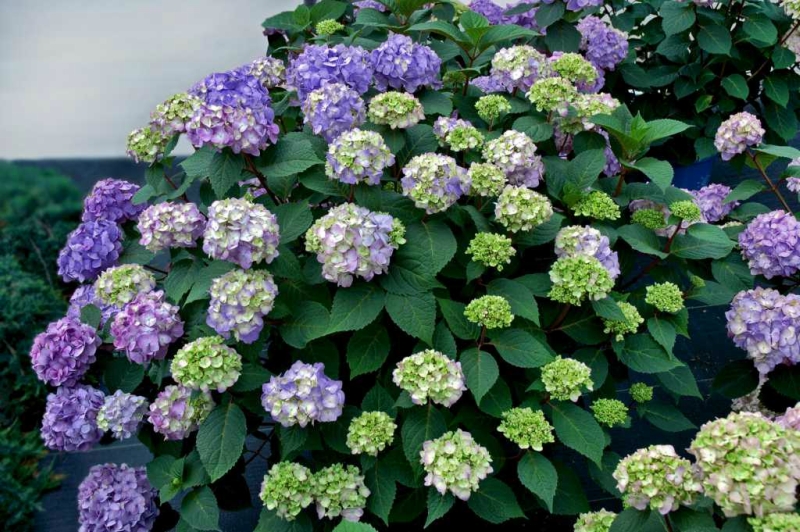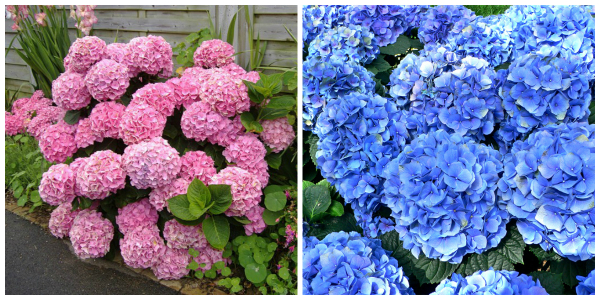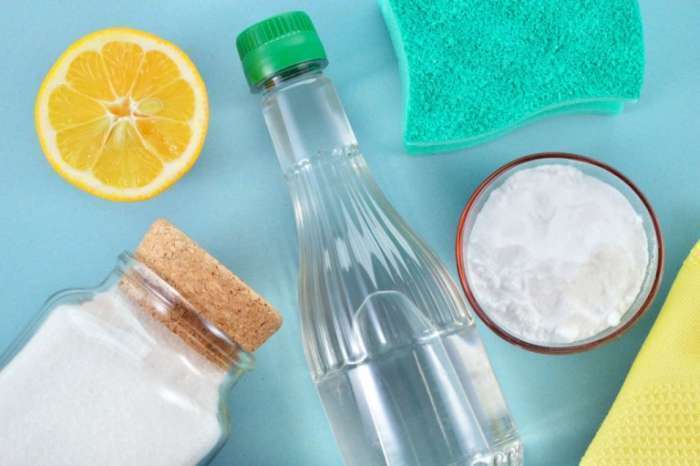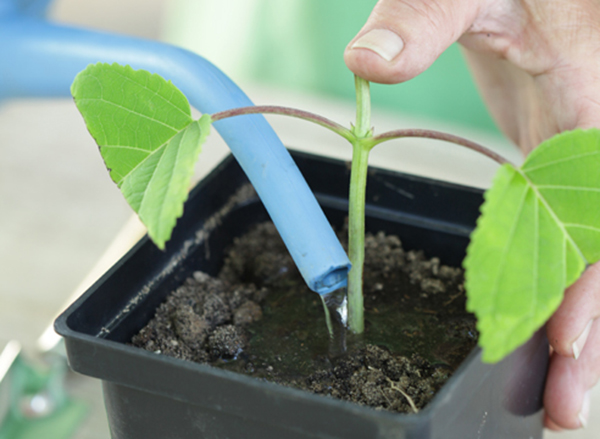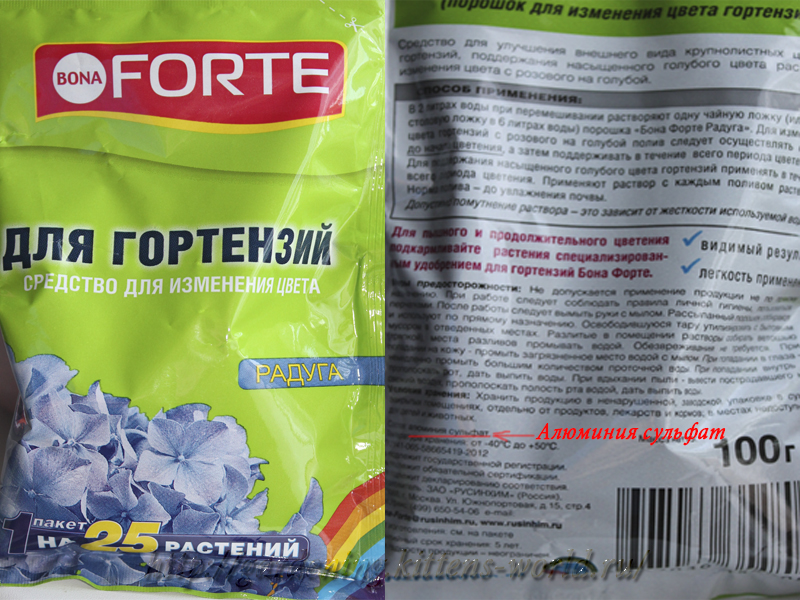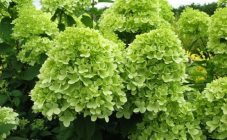Content:
Under the influence of external conditions, hydrangeas acquire the ability to change their traditional color and be painted in different colors. The color-changing property is widely used in horticultural crops. In order to use it, you need to know why this is happening, how to paint the hydrangea and how to water the hydrangea to change the color.
Brief description of culture
Hydrangeas are a genus of flowering plants belonging to the Hortensia family. They grow predominantly in the form of shrubs up to 3 meters high, although tree-like and liana-like green varieties are found. Flowering begins in the spring and continues until the end of autumn. Flowers are located at the ends of the stems and are arranged in panicle and corymbose inflorescences. The fruit is a capsule filled with small seeds.
Plants stand out for their variable flower coloration. Most often it is pink, but there are blue and white varieties. The color is capable of changing under the influence of various chemicals.
Reasons for changing the color of hydrangea
To know how to make a hydrangea colored, it is worth considering that it changes the color of the petals as a result of complex chemical reactions. So, in large-leaved varieties of culture, such as Macrophil, there is a significant amount of the substance delphinidin-3-monoglycoside, which, when it interacts with aluminum, provokes a change in the color of the corollas to blue.
Aluminum can be absorbed by the plant in question exclusively in a dissolved state. This element goes into this state if the pH level of the substrate is not high enough. If this figure exceeds 5.5, then aluminum becomes difficult to dissolve and inaccessible to hydrangeas. Based on this, there are the following degrees of plant gradation depending on acidity:
- at a pH below 5.5, the hydrangea begins to paint itself blue;
- at a pH of 5.5-6.5, the plant is able to paint itself purple;
- at pH 6.5 and above, the plantings begin to change color to pink or red.
In addition to acidity, the content of aluminum itself is also important. With its lack, you can only slightly stain the flowers, due to which the color of the plants will be weak and unexpressed. Phosphorus levels are just as important for color change. With an excess of it, the color will change little or not change at all. This is due to the fact that phosphorus converts aluminum into poorly soluble false complexes. In view of this, its content in the soil should be reduced to the required minimum. At the same time, potassium binds aluminum salts, converting them into a soluble state, therefore, to change the color, this element must be added in sufficient quantities.
Watering with the addition of aluminum salts
The blue and blue color of hydrangea flowers is found in nature much less often than other colors, which is why it is it that is most preferable for growing plants in the garden and in the flowerbed. In order to repaint plants in this color, first of all, it is necessary to reduce the acidity index to 4.5-5.5, and then fill the aluminum deficiency.
The following types of irrigation are used:
- 5 grams of aluminum-potassium alum is dissolved in a liter container with water. This substance contains aluminum in a form accessible to plants, as well as an acid residue, which leads to a decrease in the pH value;
- potash fertilizers with a minimum phosphorus content are also capable of repainting hydrangea. Nitrogen, phosphorus and potassium should be in a ratio of 10: 5: 20. The procedure for preparing and spraying the drug depends on each specific case and the substance used;
- feeding with potassium sulfate forms an acidic environment, which is very important for hydrangea in this situation. 15 g of the specified substance is dissolved in a liter of water. Upon completion of thorough mixing, the plants are watered with the resulting liquid exclusively at the root. The procedure is repeated regularly throughout the growing season;
- you can achieve the required acidity by irrigating hydrangea with acetic, oxalic and other types of organic acids. If it is impossible to use these substances, it is allowed to use, as an alternative, any electrolyte, except for the battery, which contains salts of heavy metals, including lead;
- water used for irrigation often contains a high content of carbonate substances, which makes it hard and poorly suitable for irrigation. To prevent harm to the plant, the liquid should be set aside for several days, and then a small amount of lemon juice should be added to it. The day before irrigation, a small amount of peat is introduced under the plant.
Regardless of the type of chemical used, the procedure is carried out with caution. Do not allow direct contact of chemicals with the surface of the sheet plates. To accelerate the absorption of substances by the root system, the soil in the root sector is pre-spilled.
Watering with citric acid
Citric acid will help to keep the soil acidity at a certain level, which is suitable for changing the color of the hydrangea. Watering with this tool begins immediately after the plant wakes up, maintaining a time interval between procedures equal to one and a half to two weeks.
In order to prepare the solution, you need to dilute 2 tablespoons of acid in a bucket filled with water. Stir the ingredients until they are completely dissolved. For each square meter of the planting area, there should be one bucket of the prepared product. The procedure is carried out exclusively after preliminary irrigation with clean water.
How to make hydrangea blue at home
First of all, in order for the color of the plant to change to blue or blue, it is necessary to establish the acidity of the soil. To obtain a blue color, a more oxidized soil is needed, therefore, if this indicator is insufficient, it should be increased.
After that, the aluminum content in the substrate should be increased by adding one of the following substances to the root sector or to the pot:
- ground coffee;
- compost;
- needles;
- aluminum sulfate.
It should be noted that this process is relatively lengthy.In some cases, changes in the color of hydrangea have to wait about a year.
In the presence of alkaline soil on the site, from time to time, additional sources of aluminum have to be added to it, which contribute to the fixation of the required color. The simplest method in this case is the use of aluminum sulfate. 4 tablespoons of the specified substance are dissolved in a 4.5-liter container with water. The procedure is repeated every 15-30 days.
In large areas occupied by hydrangeas, the method is more preferable, which implies that the plants need to be fed with aluminum sulfate in a dry state. Up to 0.5 kg of the drug is allowed to be applied per square meter of area. After this, the plantings are treated twice a year with aluminum-potassium alum, 30-40 g of which is dissolved in a 10-liter container with water. For each adult bush, there are 2-3 buckets of the finished product.
How to change the color of hydrangea from white to pink with folk remedies
The soil on which the hydrangea is cultivated must be brought in terms of acidity to a value of 6.5 and above. In such conditions, plants continue to fully vegetate, but are no longer able to assimilate aluminum salts. If the soil is too peroxidized, dolomite flour, lime or ground limestone is added to it, in small quantities. An overdose of these substances can provoke a number of diseases, in particular, chlorosis.
After reaching the required pH level, it should be kept constant. For this, fertilizers should be used, which include nitrogen and phosphorus elements.
How to water a hydrangea so that it changes color, folk recipes
Potassium permanganate
The introduction of this substance allows to increase the absorption of aluminum, which contributes to the formation of blue buds that look great both in pots and flower beds, and in bouquets. Potassium permanganate has other beneficial effects on hydrangeas:
- preventing the development of fungal diseases;
- assistance in the establishment of peduncles, increased flowering;
- maintaining the pH value within the limits necessary for the plant;
- strengthening the stem and wood, increasing their flexibility.
A bright raspberry solution of potassium permanganate is not recommended for use, since it will only provoke fragmentary painting, which will cause the loss of decorative properties. An overly concentrated preparation will cause burns to foliage and root system.
Vinegar
In terms of discoloration of hydrangeas, apple cider vinegar and acetic acid act similarly to citric acid and allow color changes. Dissolve 100 ml of acid in a bucket of water. There are up to 10 such buckets per square meter. Treatments are carried out from the day the plant wakes up at the end of the dormant period, as well as until the very end of the growing season. The frequency of treatments is every two weeks.
Knowing how to water the hydrangea so that it changes color, you can easily increase the decorativeness of the plantings. Hydrangeas with improved coloration become an adornment of any garden and flower bed, along with roses, violets and other crops.
